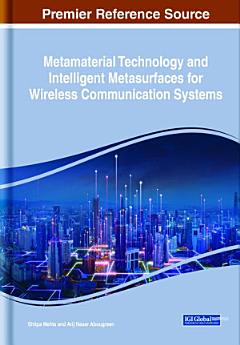Metamaterial Technology and Intelligent Metasurfaces for Wireless Communication Systems
આ ઇ-પુસ્તક વિશે
Metamaterial Technology and Intelligent Metasurfaces for Wireless Communication Systems compiles and promotes metamaterials research and sheds light on how metamaterials and metasurfaces will be used in the 5G era and beyond. Covering topics such as active and passive metamaterials, metasurfaces-inspired antennas, and metamaterials for RFID and sensors, this book is ideal for researchers, students, academicians, and professionals.
લેખક વિશે
Arij Naser Abougreen received the M.Sc. degree in Communication engineering from the University of Tripoli, Libya, in 2018. Her research interests include image processing, machine learning, Internet of Things and wireless communication. She has three years of teaching experience in reputed university and high institute. She served as a session chair of International Conference on Digital Technologies and Applications (ICDTA'23 conference) and a session chair of the International Conference on Artificial Intelligence in Information and Communication (ICAIIC 2023 conference). Also, she served as a technical Program Committee member and a reviewer for several conferences such as 7 IEEE World Forum on the Internet of Things (WFIoT2021), New Orleans, USA; 11 series of IEEE Symposium on Computer Applications and Industrial Electronics (ISCAIE 2021); 44 International Conference on Telecommunications and Signal Processing (TSP), 2021; 30 International Conference on Computing and Communication Networks (ICCCN-2021), organized by Manchester Metropolitan University, United Kingdom. She has been accepted for the Turkish Government Ph.D. Scholarship. She is currently editing three books. [Editor]




